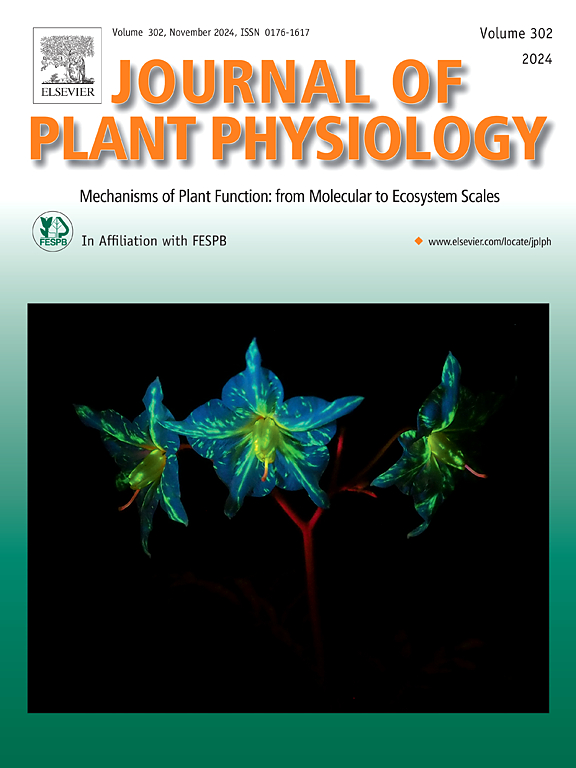A review of the journey of field crop phenotyping: From trait stamp collections and fancy robots to phenomics-informed crop performance predictions
IF 4.1
3区 生物学
Q1 PLANT SCIENCES
引用次数: 0
Abstract
Crop phenotyping encompasses methodologies for measuring plant growth, architecture, and composition with high precision across scales, from organs to canopies. Field-based phenotyping is pivotal in bridging genomic data with crop performance, offering a promising pathway for predictive modeling in diverse environments. This review traces the evolution of phenotyping from high-throughput sensor data for trait extraction to advanced modeling approaches that integrate multi-temporal data, latent space representations, and learned crop models. This evolution is exemplified mostly by morphology- and growth-related examples from the core expertise of the authors. High-throughput trait extraction, facilitated by advanced imaging and sensor technologies, has enabled rapid and accurate characterization of complex traits essential for crop improvement. Carrier platforms, such as drones, rovers, and gantries, have played a critical role in capturing high-resolution data across large fields, enhancing the spatial and temporal resolution of phenotypic data. Publicly available datasets have further accelerated research by providing standardized, high-quality data for benchmarking and model development beyond the realm of crop growth as for example in crop photosynthesis. These advancements are transforming phenotyping into a predictive science capable of informing breeding and management decisions. As phenotyping methodologies continue to evolve, the integration of machine learning and data-driven approaches offers new opportunities for enhancing prediction accuracy and understanding genotype-environment interactions. While challenges such as data heterogeneity, scalability, and cost remain, we highlight key gaps and propose solutions, underscoring phenotyping's critical role in future agricultural innovation.

回顾田间作物表型的历程:从性状邮票收集和花哨的机器人到基于表型的作物性能预测
作物表型包括测量植物生长、结构和组成的方法,具有高精度跨尺度,从器官到冠层。田间表型是连接基因组数据与作物性能的关键,为不同环境下的预测建模提供了一条有希望的途径。本文回顾了表型的演变,从用于性状提取的高通量传感器数据到集成多时间数据、潜在空间表示和学习作物模型的高级建模方法。这种演变主要通过作者的核心专业知识中的形态学和生长相关的例子来例证。在先进的成像和传感器技术的推动下,高通量的性状提取能够快速准确地表征作物改良所必需的复杂性状。无人机、漫游者和龙门架等载体平台在捕获大范围高分辨率数据、提高表型数据的时空分辨率方面发挥了关键作用。公开可用的数据集通过提供标准化的、高质量的数据,为作物生长领域以外的基准和模型开发提供了进一步的加速研究,例如作物光合作用。这些进步正在将表型分析转变为一门预测性科学,能够为育种和管理决策提供信息。随着表型方法的不断发展,机器学习和数据驱动方法的整合为提高预测准确性和理解基因型-环境相互作用提供了新的机会。虽然数据异质性、可扩展性和成本等挑战仍然存在,但我们强调了关键差距并提出了解决方案,强调了表型在未来农业创新中的关键作用。
本文章由计算机程序翻译,如有差异,请以英文原文为准。
求助全文
约1分钟内获得全文
求助全文
来源期刊

Journal of plant physiology
生物-植物科学
CiteScore
7.20
自引率
4.70%
发文量
196
审稿时长
32 days
期刊介绍:
The Journal of Plant Physiology is a broad-spectrum journal that welcomes high-quality submissions in all major areas of plant physiology, including plant biochemistry, functional biotechnology, computational and synthetic plant biology, growth and development, photosynthesis and respiration, transport and translocation, plant-microbe interactions, biotic and abiotic stress. Studies are welcome at all levels of integration ranging from molecules and cells to organisms and their environments and are expected to use state-of-the-art methodologies. Pure gene expression studies are not within the focus of our journal. To be considered for publication, papers must significantly contribute to the mechanistic understanding of physiological processes, and not be merely descriptive, or confirmatory of previous results. We encourage the submission of papers that explore the physiology of non-model as well as accepted model species and those that bridge basic and applied research. For instance, studies on agricultural plants that show new physiological mechanisms to improve agricultural efficiency are welcome. Studies performed under uncontrolled situations (e.g. field conditions) not providing mechanistic insight will not be considered for publication.
The Journal of Plant Physiology publishes several types of articles: Original Research Articles, Reviews, Perspectives Articles, and Short Communications. Reviews and Perspectives will be solicited by the Editors; unsolicited reviews are also welcome but only from authors with a strong track record in the field of the review. Original research papers comprise the majority of published contributions.
 求助内容:
求助内容: 应助结果提醒方式:
应助结果提醒方式:


